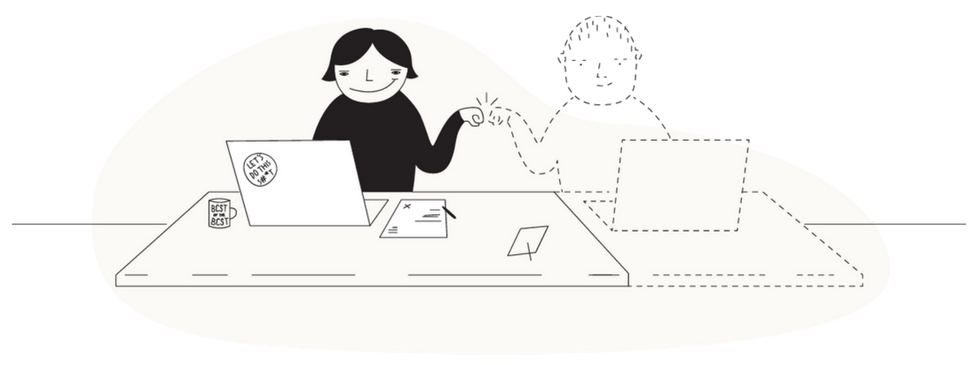Nicole offers a proven track record of applying Data Strategy and related disciplines to solve clients' most pressing challenges. She has worked as a Data Scientist and Project Manager for federal and commercial consulting teams. Her business experience includes natural language processing, cloud computing, statistical testing, pricing analysis, ETL processes, and web and application development.
Register now through January 9th for Virtual CDMP Bootcamp (Jan 23 and 24) and receive 4 weeks of free access to CDMP Crash Course
Why the Pomodoro Technique is so Effective for Data Practitioners
This time management method can help increase productivity and focus while making work more fun and less stressful.
Author: Nicole Janeway | Post Date: Feb 8, 2023 | Last Update: Jun 4, 2024 | Related Posts

Pomodoros are an ideal productivity strategy to incorporate into your everyday routine. They help keep work fun and novel.
The pomodoro technique was created by Francesco Cirillo in the late 1980s. As a student, Cirillo used a timer to divide the duration of his work into intervals of 25 minutes, separated by 5 minute breaks. Cirillo named the technique for the tomato-shaped kitchen timer that he had on hand when inventing the method. The word pomodoro, which is Italian for tomato, has come to refer to a cycle of work and rest.
The method is supported by research showing how planned breaks can increase creativity and focus, helping us stay alert and accomplish more over time. By giving yourself an endpoint (i.e., the conclusion of a work interval) to focus on, you can push yourself to concentrate a little harder with the knowledge a break is not far away.
Contents
- Basics
- Introduction
- How it Works
- What Constitutes a Good Break?
- Pomodoro Timers
- Benefits of Coworking
- Conclusion
- Related Posts
Basics
How to do a pomodoro working session:
- Fight procrastination: get started by setting a 25 minute timer, or if that's too much, a 5 minute one
- Eliminate distractions to increase focus: session should take place with just you, your timer, and your work (and maybe some energizing music)
- Commit to single-tasking: set a defined goal for the session and work on it until it's done
- Gain a better understanding of how long tasks take you to complete: estimate how many pomodoros you'll need to complete each task ahead of you
- Have fun: racing against the clock gives work an element of excitement
- Work toward a deadline: pomodoro sessions provide good practice at getting tasks done by a specific time
- Stay accountable to your goals: scheduling pomodoro sessions is a great way to think through what you want to accomplish in a day
How to do a pomodoro break:
- Try something totally different: for maximum relaxation, science tells us your best bet is to step away from the computer or textbook
- Manage your energy levels: consistent breaks give you time to relax and unwind
- Promote creativity: when our attention is unfocused, our brains make creative connections between ideas
- Enhance long-term memory retention: another benefit of taking breaks is they help our long-term memories to store information
- Touch grass
Introduction
The pomodoro technique has many readily accessible benefits, such as helping you break through the urge to procrastinate and increasing your focus as you work. Breaking work into smaller, more manageable chunks makes it easier to get started and stay on task. The short breaks between pomodoros allow for a mental reset, which can help to prevent burnout and spur ideation, engage the long-term memory, and enhance overall productivity.
You may find that over multiple pomodoro cycles, you're able to develop intense concentration during the work interval. Doing pomodoros will train you to move quickly between an indistractable state of intense focused attention and a state of relaxed and unfocused attention that promotes creativity and recovery.
While finding time for deep work in our hyperbusyalwaysconnected world can be an immense challenge, it's good to know that the pomodoro method is always there for you. Pomodoros can be used to work intensely toward a goal for a set duration of uninterrupted time. Blocking off your calendar for multiple pomodoros is an ideal approach to making sure you have enough time and focus to achieve major milestones.

How it Works
The pomodoro technique is a time management method that breaks work into focused intervals, traditionally 25 minutes of work followed by a 5 minute break.
The technique can be adapted to intervals of any length that are productive for you. The important thing is that you're deciding how long you want to work on your specific task and how long you want to step away from your work to recharge.
Some variations of the traditional pomodoro interval include: 32 minutes of work followed by 8 minutes of break, 50 minutes of work followed by 10 minutes of break, and 75 minutes of work followed by 15 minutes of break. As the focus time increases, so does the break time in order to allow for adequate rest and recovery. This helps to prevent burnout and maintain productivity over the long haul.
After three sessions of work, it's recommended to take a longer break, such as a 15 minute break if you're doing 25 minute work sessions or a 30 minute break if doing 50 minute work sessions. This longer break serves as a more complete mental and physical reset.
This opportunity to recharge gives you extra time to finish a small personal task or really get into a truly relaxing activity. The long break can serve as something to look forward to before you get back into the cycle of three working sessions with short breaks followed by a fourth working session then another long break. We recommend repeating the metacycle (i.e., four work sessions followed by the longer break) throughout the day to keep track of time and maintain a high level of energy and concentration while working.
What Constitutes a Good Break?
The breaks during the pomodoro technique can be used for any activity that is 1) substantively different from the task you're working on, and 2) leaves you feeling refreshed and rejuvenated. Some examples may include taking a walk, practicing a deep breathing technique, reading a book, or making a cup of tea.
Whatever you're doing, try to encourage yourself to fully detach from work. For example, if your task involves sitting in front of a computer, taking a break to do some stretching or yoga would be more beneficial than continuing to stare at a screen while checking social media or looking at cat photos. If your task is studying a textbook like the DMBOK, don't pick up a different book, even a fun one, during your break.
By experimenting with many different kinds of activities during your breaks, you can learn which ones increase your focus and creativity.

Pomodoro Timers
Setting up a kitchen timer could be enough to get started with the pomodoro method.
Alternatively, many web-based pomodoro timers are available if you find yourself able to use one without getting distracted by the internet. Some options, such as Pomofocus, will assist you in keeping track of your tasks. Others, like the Aesthetic Pomodoro Timer, offer a lovely backdrop and music player.
If you're running an online session with a study group, you might find Cuckoo, a pomodoro timer for remote teams, to be extremely useful for keeping everyone on the same page.
And then there's Focusmate, which is our favorite. It connects you with a study partner anywhere in the world for a motivating deep work session any time you need one.

Focusmate is an easy-to-use platform that goes beyond the standard pomodoro timer functionality by providing accountability and comradery in every working session.
You can opt for a session lasting either 25, 50, or 75 minutes, and then Focusmate will pair you in a video call with another person anywhere in the world. Each session starts at the fifteen minute mark (i.e., when the clock shows :00, :15, :30, or :45) and begins with a quick checkin, in which participants state their objectives for the session.
The checkin is followed by the deep work portion of a traditional pomodoro. Users have the option of sharing their screen for added accountability and there is also a chat feature that can be used to unobtrusively share progress updates. Both partners work independently until the timer goes off. Then the participants check in again at the end to share their achievements from the work interval.
By adding a social aspect to the beginning and end of the pomodoro session, Focusmate takes the process of getting things done and makes it significantly more motivating. This helps people stay accountable to their study goals and achieve them.
Benefits of Coworking
Focusmate provides you with an accountability partner and study buddy whenever you need one. The presence of another person can help to keep you motivated and focused on your task. This concept is formally referred to as "body doubling."
Working in the company of someone else kicks off five work-oriented behavioral triggers:
- Task implementation
- Social pressure
- Accountability
- Specific task direction
- Activation of productivity neurotransmitters
While this approach can be especially beneficial for individuals with ADHD, body doubling is helpful for all of us as a proven method for improving effectiveness and promoting a sense of ease during difficult work. Your Focusmate partner offers a reminder to stay focused and not to disengage from the task at hand.
Within groups, Focusmate allows you to connect with others in a similar field. You'll be astonished by the things you pick up during checkin conversations. Particularly when you've been paired with someone from one of your Focusmate groups, hearing the tasks your partner has planned for their work session can inspire new approaches to your own work. And though it's not the primary focus of the site, Focusmate can be an incredible place to get a fresh perspective if you use your breaks for conversation with your partner.
Also cool — doing pomodoros on the platform gives you the opportunity to meet people from all over the world, particularly if you're joining early or late in your day.

Conclusion
We love the Pomodoro technique as a way to get more done with less stress. Implementing blocks of focused work can be a game changer for those of us who have demanding jobs that require oversight of many projects. As a knowledge worker, you need to task switch effectively, store a lot of information, and achieve ambitious goals. The pomodoro method is extremely effective for those looking to improve their productivity and reach their goals.
If you're currently studying for the CDMP Fundamentals Exam, you may be interested in using this playlist of pomodoro sessions to study. If you would like to study with your peers, check out our upcoming events.

Nicole Janeway Bills
Data Strategy Professionals Founder & CEO











